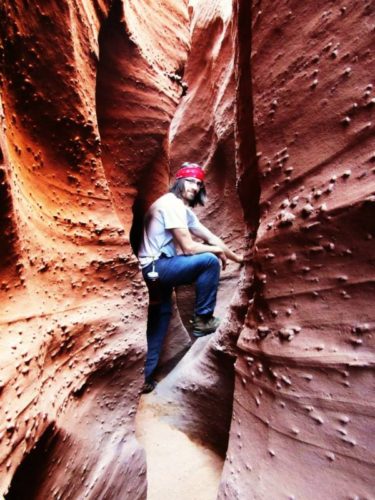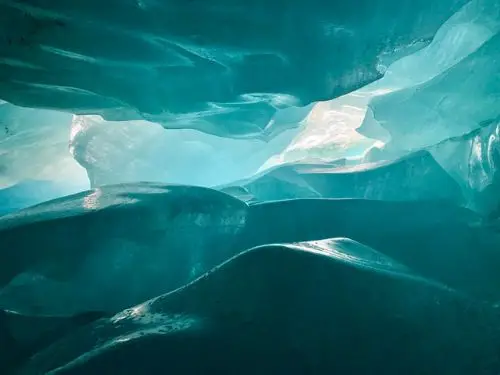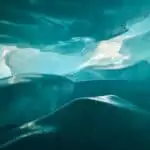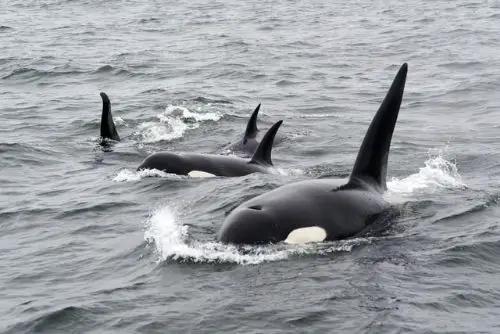


You have checked scuba-diving off your adventure list. You know how to clock your oxygen loss, enjoying the underwater scenery without giving yourself DCS or nitrogen narcosis. You’ve seen shipwrecks, reefs, and all sorts of fish … maybe even a bull shark. But. It’s got you hooked! What is the next level?

Allow me to introduce iceberg diving. In the remote harbors and fjords of Greenland, drop through an icehole (during certain seasons) to the sea water below. Enter a watery world of kelp, amphipods, jellyfish, and of course the infamous two-thirds of an iceberg that remains underwater—all in a water temperature within degrees of freezing. Brrr!
Experience dramatic icescapes submerged in waters that you can only hold your own in with training & resilience. The personal satisfaction of having accomplished such a feat will linger after the immediate glimpse into another world is over … unless you are able to capture pictures along the way.
Iceberg diving is at the high-risk end of diving experiences due to the inherent extreme temperatures, which places an increased risk on both health and equipment, and the risk of pieces of ice suddenly misbehaving (cracking). One recommendation is to have at least 100 dives on your record before an iceberg diving trip. Northern Explorers, a tour company in Greenland, require experience with cold-water diving and at least 20 logged dry-suit-dives in the last two years.
The dive proceeds much like a typical dive at the surface level: getting dressed in the undergarments, a snowmobile or truck ride out to the dive spot, finishing gearing up in the dive suit before entering the water. But once you enter the water, it will be unlike anything you’ve experienced.




Ice. Seriously. We’re talking about iceberg diving after all, the environment will be cold and icy. Ocean water is typically 28-32 degrees Fahrenheit depending on the salinity. Iceberg surfaces and interiors are even colder!
Iceberg diving is technically a year-around sport, since the areas that form icebergs rarely melt fully. The winters, however, are bitter cold and stormy in the relevant areas; once any surface ice melts by the late spring, the water is cloudier from multiplying plankton during the summer. A recommended in-between point is April.
Iceberg diving is possible in three areas globally. The easiest to access, but also the least reliant for having icebergs, is Newfoundland, Canada. More dependable in the iceberg area but less easy for traveling: the harbors and fjords of Greenland. Least easy to access but very reliable for having icebergs are the coastlines of Antarctica.

“Iceberg Alley” in Newfoundland-Labrador, Canada, is home to a long, pristine chain of south-floating icebergs off the Canadian Arctic ice shelves near Baffin Bay. These lumbering giants can be as tall as a 15- or 20-story building! Up to 800 appear along the coast every year. A popular guide choice is Ocean Quest in the city of St. John.

Far in the North, the ice-bound countries of Greeland and Iceland host a handful of exclusive SCUBA diving operations for underwater iceberg diving! Glacial silt gives the bergs their beautiful azure and teal tints, a stark contrast to the gray-blue ocean waters. Popular outfitters include Arctic Dream and Northern Explorer.

At the other end of the world, icebergs come fast and furious. They’re big, bold, and surrounded by the oceanic life of the Southern Ocean, such as seals and penguins. However, no permanent settlements exist on Antarctica besides scientific camps. Besides the peerless Jill Heinerth, few people have gone SCUBA diving inside an Antarctic iceberg!
Obviously, to SCUBA dive with icebergs, you’ll need to be an expert SCUBA diver! It’s recommended you have at least 100 dives under your belt before attempting iceberg diving.
You should have a strong knowledge of ocean currents and ice conditions! Icebergs create their own localized currents. When temperatures rise above freezing (or the sun heats parts of the iceberg), the berg can crack and shatter, causing tidal force waves.
Iceberg diving involves a lot of cold temperatures, both out and in the water. Nuuk, Greenland may cross 50°F in the height of summer, but the typical temperature for more than half the year is freezing or below—we’re talking cold. Dressing warm and keeping your internal temperature warm is important, even before you hit the water which can range from a summer high of 10.2°C (50°F) to a winter high of 1.4°C (34°F). Once in the water, be aware that your equipment is subjected to icy temperatures as well. Some dives require two regs plus an octo as the regs can freeze over and need to be swapped out underwater.
Wearing appropriately warm underclothing beneath your dry suit is important, ideally as much thick (5-7mm) neoprene as possible in under to keep body heat in. However, make sure the gloves you wear are flexible as your fingers are going to end up stiff anyway, don’t make it worse! Several divers recommend 7mm 3-finger neoprene gloves.[3]
The other potential risk is the iceberg itself. Ice is prone to change—chunks cracking off or even the entire block shifting. This is something that a local guide will know more about, offering safety guidelines personalized to the day and potentially safety equipment like hard-shell helmets.
During the dive, you’ll have the possibility to see plankton, amphipods, jellyfish, and nudibranchs around the iceberg, as well as some cold-water fish like catfish and lumpsuckers. If you are at a dive spot along the continental shelf you may run across sea cucumbers as well.
Above water, whale watching and bird watching may be possibilities. Humpback whales can be found around Greenland, while auks, razorbills and rock ptarmigans tend to inhabit colder regions for the birdwatchers.



The easy requirements:
The first step to building towards iceberg diving is to have the Professional Association of Diving Instructors open water (PADI OW) certification—the initial certification and testing for scuba diving.
(A side note that anyone with a Framington risk score of 10% or over should check with a doctor about their cardiovascular safety before diving.)
The best training for iceberg diving is outlined by Northern Explorers: experience with cold-water diving and at least 20 logged dry-suit-dives in the last two years. Some outings require a further certification in ice diving as well.
You will need everything that you usually do for a cold-water scuba dive: dry dive suit, BCD, two separate cold-water regulator, octo, fins, mask, and gloves; as well as a diving computer and a compass and pressure/depth gauges, either individual or built into other equipment. Oxygen tanks are usually provided by your tour company or else rented at the dive site—because who wants to carry 30+ pounds of oxygen tank in their luggage?
Specifically for an iceberg dive, you are going to want very warm underwear and socks. Food & liquids are usually handled by the tour guides, but if not: hot teas and soup are excellent sources of nutrition, easily handled by (and warming for) post-dive stiff fingers.
An underwater camera to preserve the memories is an excellent accessory—just make sure it is in an enclosure that will allow it to operate in, again … near-freezing conditions!
Price:
A basic scuba diving gear set-up costs from $700-$3000. It is possible to rent a set, but let’s face it, a dive suit is a rather personally used item for renting! If you’ve been diving enough to have the experience for iceberg diving, you most likely already have invested in your own set anyway. The undergarments for a dry suit can range from $50-$500, with the warmest inevitably being towards the higher end.
Price:
If you plan to go iceberg diving in a guided tour, food and nutrition are typically included in the cost.
Price:
Breakdown by flight leg:
Price:
This, again, depends on whether you chose to go through a guided tour or not, as accommodations are included in the tours. If you’re winging it: hotel, hostel, and Airbnb prices in Greenland are typically between $100-300 a night.
Price:

If they are fully certified and diving with you, absolutely! Otherwise, leave them at home, they’ll be happier there than standing out on the ice waiting for you—which the tours won’t really have space for anyway.
Yep. At least 10 to get the PADI OW certification and 18 for ice diving certification.
Classic scuba 101: you’re in water, just go for it. (This is also why renting suits is possibly too personal.)
See Notes on transportation in the Finances & Budget section.
See notes in the “Where and When to Go?” section.
Yes, there are guided tours in all three areas. Northern Explorers is the only company in Greenland, all other Greenland tour groups route to them for iceberg diving!
Copyright 2021 – Adventure on the Cheap (SRVS)
